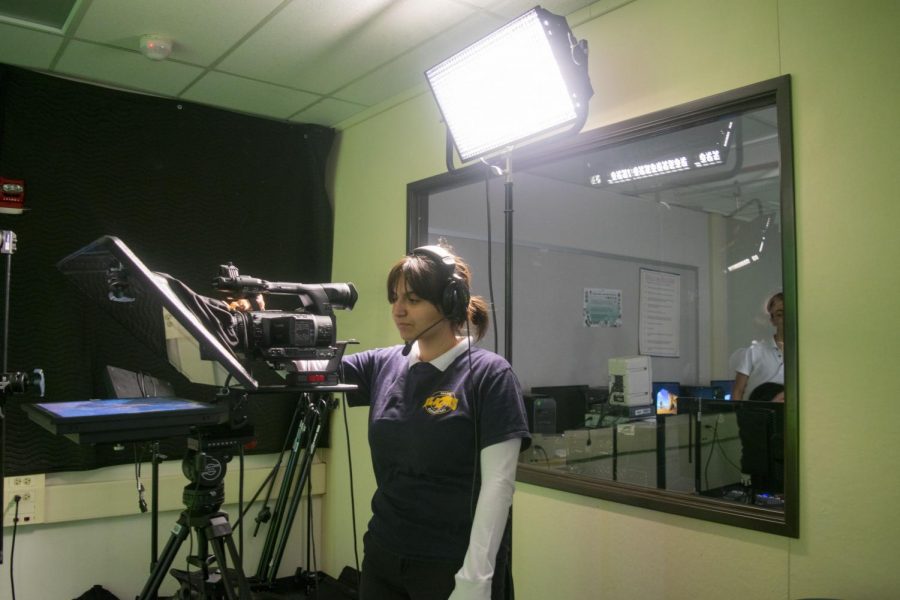Underpaid, underrepresented and unappreciated
Why the film industry and Hollywood should close their gender pay gap
2020-graduated senior Lyanna Babakhanian handles the cameras and audio to help the Broadcast Club.
It is true that women have more opportunities now more than ever in the male-dominated film industry and Hollywood. The Center for the Study of Women in Television and Film finds that women are definitely inching up in the creative department, as the percentage of female creators went from 25 percent in 2018-2019 to 28 percent in 2019-2020. There is also an increase in the number of women that work behind the scenes of films, since the percentage of female producers, directors, writers, and editors has gone up from 25 percent in 2014-2015 to 31 percent in 2018-2019 and 2019-2020.
Women’s representation may be rising, but a news report from San Diego State University shows that only 10 percent of directors who made the films in 2019 were female. Women are also still subject to gender bias because the distribution of men in comparison to women is significant, which causes women not pursue careers typically meant for men such as plumbing, maintenance and repair and even directing films.
This even extends to those who act in Hollywood. Lauzen found that female characters are more likely to play roles such as wives or mothers, while males are more likely to be business executives or work-oriented roles. Specifically speaking, about 42 percent of females played work-oriented roles compared to 56 percent of males.
Spreading this information to those who enter the industry, especially at Clark, is vital because it offers more perspective on what the actual industry might be like for those who are currently taking Cinematography.
Senior Amanda Janoyan, who has aspirations of being in the film industry, is aware of this gender bias and expects to face challenges herself in the future. “Well… my number one fear is not being able to find jobs or be successful,” she said. “However, some other deep fears I have is not being respected by others on set and off, which I will not take lightly… and I plan to always stick up for myself.”
For every dollar a man makes in a professional setting, a woman makes about 79 cents. At first glance, it seems as if this slight difference doesn’t impact women’s lifestyles, but the truth is that these cents accumulate rapidly and snowball into nearly $10,000 per year that women are deprived of earning. Generally speaking, the Equal Pay Act of 1963 promised that women and men would be paid the same amount of money for the same job in the workplace and although this was a revolutionary movement that helped women start on the path to gender equality, it isn’t good enough.
Another reason behind why women are not being paid as much money as men are in the film industry is because of the lack of exposure for female-led films. According to a study released in 2016, mid-range budgeted films (those less than $25 million) directed by men were shown in theaters three times more than those directed by women. This further shows that women are severely underrepresented in both behind-the-scenes work and on-camera.
So what can be done to fix this issue? For starters, the gender pay gap can be sealed by ensuring that women earn their credit when credit is due and all subjective gender bias is mostly erased. By doing this, the film industry will have an equivalent playing field for both entering the industry and thriving in it. It can also inspire women who have goals in cinema like Janoyan.
“I’ve always been in love with film, ever since a young age. But when I started high school doing cinema and clubs involving cinema i realised it was my true passion,” Janoyan said. “If you know important people, they will say good things about you and eventually you will become one of those important people.”

Hobbies/interests: Baking, handcrafting, reading/literature, listening to music, watching movies, collecting rocks/shells
Fav artist: Troye Sivan
Movie...

Hobbies/Interests: Writing, playing tennis, & watching tv
Spirit animal: Koala
Places you want to travel to: Greece, Bora Bora, & Turks and...













